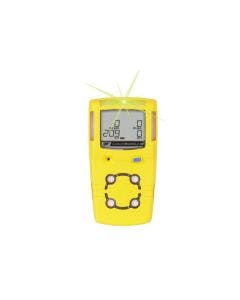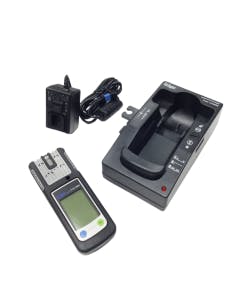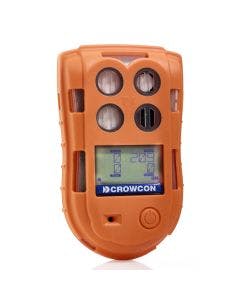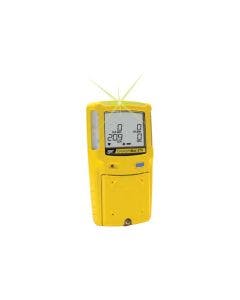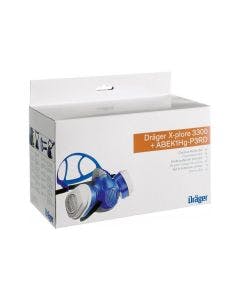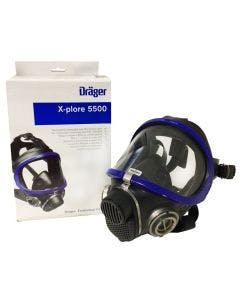Gas Risks in the Telecommunications Industry

Telecommunications Industry Gas Risks
The telecommunications industry provides lots of technology for equipment we use daily, including internet, cable, phone, and satellite providers. Although very common, the telecoms industry can be very hazardous for those working in the industry regarding the risk of harmful gases.
Some key technologies of the telecoms industry include fixed-line telephony, mobile telephony, internet services, data networks, satellite communications and fibre optics. Installing, maintaining and servicing these technologies puts workers at different kinds of gas risks, so they must know the dangers of the gases and the risks they can cause when the correct protocol is not adhered to in and around these environments.
It isn't just out in the field completing installations and maintenance that telecom engineers can come into gas hazards. Keep reading below to find out about different gas risks in the telecoms industry and where they may occur.
What gases are found in Telecommunications Industry?

Hydrogen in Battery Rooms
Telecommunication facilities use backup power systems, like batteries, to reduce the risk of power outages. These battery rooms can contain batteries, in particular lead-acid batteries, that emit hydrogen gas during charging and discharging. Hydrogen is a very flammable gas that can form explosive air mixtures.
Adequate ventilation and monitoring systems should be in place to mitigate the risk of gas build-up and potential explosions.
Fuels and Natural Gases Used in Power Generators.
Telecommunication towers and data centres also use power generators as backup power sources. These generators run on diesel, natural gas and other fuels that can harm workers. It's crucial to ensure these fuels' storage, handling, and combustion are carried out safely, as there is a risk of gas leaks, fire hazards and carbon monoxide emissions.
Proper maintenance, monitoring, and safety protocols are necessary to manage these risks.
Liquid Nitrogen and Helium Used on Equipment
Cryogenic gases like liquid nitrogen or liquid helium may be used in specific telecom applications for cooling equipment or testing. These gases can pose risks due to their shallow temperatures and potential for oxygen displacement in enclosed spaces.
Proper training, handling procedures, and safety measures are essential to prevent accidents, frostbite, or asphyxiation risks.

Chemical Storage and Handling
Telecommunication facilities use and store various chemicals for maintaining, cleaning and servicing equipment. These chemicals could be hazardous or flammable, posing risks of gas release, spills, or explosions when not handled, stored and monitored correctly.
Proper storage, labelling, handling, and chemical disposal procedures should be followed to minimise risk. Employers must provide personal protective equipment (PPE), and full training should be provided to employees working with these chemicals.
Underground Gas Pipelines in the Field
Telecommunication infrastructure and technology like fibre optic cables often share space underground with utility pipelines like natural gas. Workers need to take extra care when working within these spaces in case accidental damage or rupture of gas pipelines is caused during excavation or construction work. Without considering these risks, careless work can result in gas leaks, fire hazards, or explosions, harming themselves and the public near these sites.
Strict adherence to safety guidelines, proper identification of utility lines, and effective communication between telecom and utility companies can help mitigate these risks.
Hazardous and Toxic Gases in Confined Spaces
There are numerous kinds of confined spaces within the telecoms industry due to the nature of the technology needing to be installed and services within small, enclosed spaces like under the ground and above ground in termination boxes. Gases like methane, carbon dioxide and hydrogen sulphide can all travel through the cable trunking underground and venture into the termination boxes above ground, creating a build-up and posing a risk to workers when they open the boxes.

Telecommunications Industry Safety Solutions
Portable Gas Detection for the Telecommunications Industry
Providing telecommunication workers, engineers and architects with personal gas monitors is the best solution to protecting them from unexpected harmful and toxic gases when on the job. A standard four-gas monitor will protect workers from Oxygen depletion, H2S, CO and LEL flammable gases. A standard four gas detector covers the worker from risks of asphyxiation through oxygen depletion and enrichment, LEL sensors to prevent any combustible gases from being present, causing a risk of fire and explosion and H2S and CO sensors from toxic gas poisoning.
Fixed Gas Detection for the Telecommunications Industry
Other telecom environments that may require a higher level of reliability or lack of false alarms include boiler rooms, powerhouses and battery rooms. These environments would benefit from a fixed gas system installed to ensure the highest level of protection is in place. These fixed systems are installed and constantly monitor the area, even when personnel are not within them.
Escape Sets for the Telecommunications Industry
Working in an environment with a high risk of needing an emergency escape, whether a confined space out in the field or a boiler room, workers should have their own designated escape sets available to them in the event of an emergency. These sets ensure that workers can escape the situation as safely as possible in an emergency like a fire or in case of oxygen depletion.
Fall Protection for the Telecommunications Industry
Although workers may often need to enter underground, enclosed, confined spaces, workers can also be subject to working at height in the telecom industry. Often when installing, maintaining and servicing technology like overhead wires and networks, workers can work at altitudes of 100's meters on masts and towers. As an employer, it is your responsibility to ensure all personnel that work at a height from a mast or tower have completed full training on how to do so safely. It's also your responsibility to provide the correct and sufficient fall protection equipment to the workers such as harnesses, winches and specialist systems.
Products for Detection
Our recommended multi-gas detectors some of which can be used for confined space pre-entry, personal protection, or area monitoring. For confined space pre-entry checks, it is recommended that a pumped monitor is used. The use of a pumped monitor allows for a sampling tube to be fed into the confined space from the outside, confirming it is safe for workers to enter.
Products for Protection
Our recommended personal protection equipment...
DOWNLOAD THIS PAGE AS AN APPLICATION NOTE
Related Blogs
BW GasAlertMicroClip XL – How to Manually Bump Test
We talk you through how to manually bump test your BW GasAlertMicroClip XL multi gas detector.
Check out our other MicroClip XL videos on our YouTube channel.

